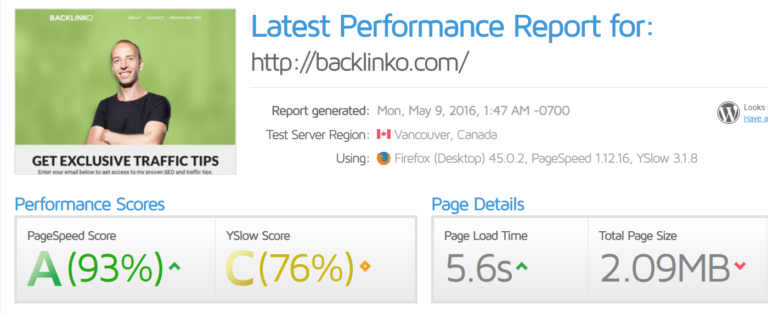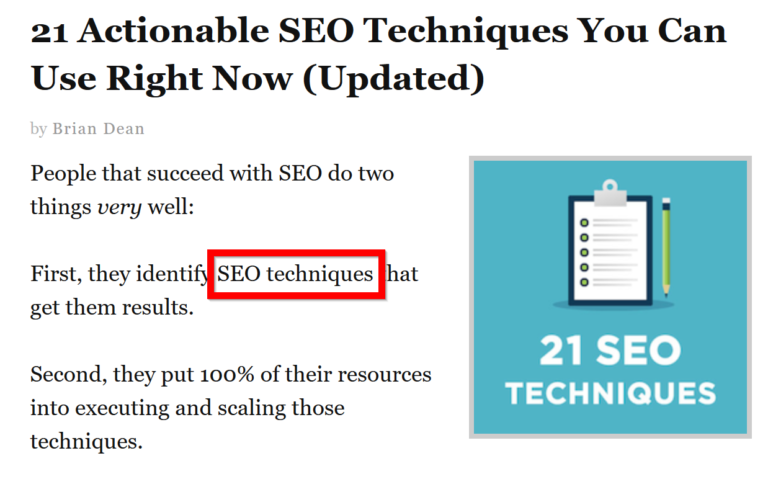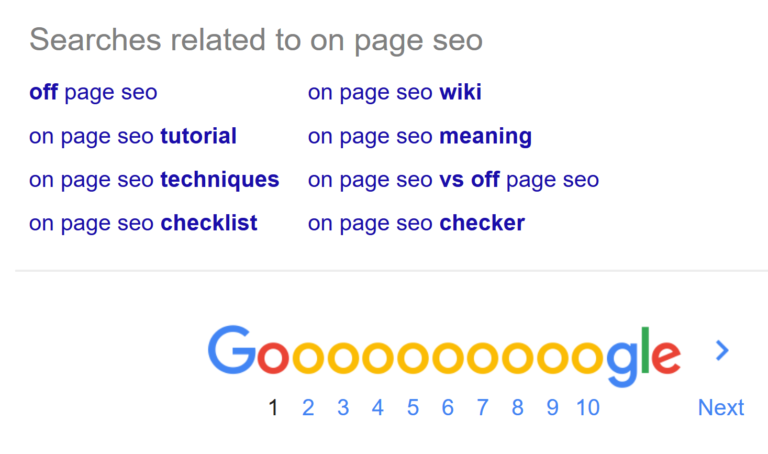One page SEO tips in 2017
Boost Site Speed
Google has said that page loading speed is an SEO position signal. It's possible for you to increase your site speed by switching to more rapid hosting, compressing images, and using a CDN.
Ensure that your website doesn’t take more than 4 seconds to load: MunchWeb found that 75% of users wouldn’t revisit a site that took to load. You can easily check your site’s loading speed using the superb GTMetrix.com: Cache plugins and CDNs are fine, but investing in premium is the #1 thing you can do in order to produce your website quicker.
$5/month hosts are decent for the money you’re paying. However they don’t hook you up with speed that is serious. I’ve actually dropped load times from 6 seconds to less than 2 seconds by switching from a $5 shared hosting plan to a top notch host (I use Synthesis Hosting here at Backlinko). From a conversion and Search Engine Optimization point of view, the ROI of premium hosting can’t be overcome.

Lose Key Word in First 100 Words
Your key word should appear -150 words of your post. Case of utilizing key word in first 100 words This can be a thing that you probably do naturally.
But lots of individuals use their key word for the very first time and start off their posts with a long, meandering intro… MUCH afterwards.
Instead, lose your key word somewhere in the first 100 words or so. This helps Google understand what your page is all about.

Use Social Sharing Buttons
Societal signals may not play a direct role in ranking your site. But shares that are social create more eyeballs on your articles.
And the more eyeballs you get, the more likely someone is to link to you personally. So don’t be shy about placing social sharing buttons conspicuously on your own website. In fact, a study by BrightEdge found that societal sharing cans raise .
Social signs aren’t an essential part of the Google algorithm. But you may be given an indirect rankings boost by social shares on sites like Google, Twitter and Facebook.
Use Internal Links
Internal linking is SO cash. Use 2-3 in every post. Check out Wikipedia in the event you would like to determine a terrific example of how to internal link in your internet site.
They add keyword-loaded internal links to each entry: Obviously, they're able to get away with 50 internal links per page because they’re Wikipedia. I advocate a simpler (and safer) approach: link to 2-5 senior posts once you publish a brand new one.
Beginning Name With Key Word
Your title tag is the most crucial on-page Search Engine Optimization factor. Generally, the closer the key word will be to the start of the name tag, the more weight it has with search engines like google. You don’t consistently need to start your title tag along with your target key word. But if there’s a key word that you’re gunning for, attempt to put it towards the start of your title.

Dazzle with Multimedia
Text can only just take your content to date. Engaging images, diagrams and videos can reduce increase time and bounce rate on site: two essential user interaction ranking variables.
That’s because I firmly genuinely believe that my content is made by it right up better.
But it has a fine SEO advantage to boot: multimedia can help you foster those user-interaction signs that Google has been paying more attention to. And it raises the perceived value of your content –which means that individuals are far more inclined to link to it.
Boost Live Time
It tells Google in if a person hits their back button after landing on a page black-and-white: this is low quality page.
That’s why “dwell time” is used by Google to size up your content’s quality. Boost your average dwell time by writing long, engaging content that keeps people.
Sprinkle LSI Key Words
LSI key words are synonyms that Google uses to discover a page’s relevancy (and perhaps quality). Sprinkle them.
I do because I usually write REALLY content n’t go nuts about LSI key words.
(Long content increases the likelihood that you’ll naturally use LSI keywords). But in case you want to make 100% certain that you’re using LSI keywords, search to your keyword in Google and scroll down to the “Searches Related to…” area in the bottom of the page: Pitch one or two of these into your post.

